| Botanical Name |
|
| Family |
Euphorbiaceae - The euphorbia family. |
| Pronunciation |
sin-a-DEE-nee-um koop-yew-LAR-ee |
| Common Name(s) |
English: Dead-man's tree; Crying Tree
Afrikaans: Dooiemansboom; Gifboom
IsiZulu: Umdlebe; Umdletshane
|
| Plant Group |
- Tree A woody, self-supporting perennial plant usually with a single main stem and generally growing more than 6 meters tall.
|
| Plant Size |
- Very Small
| Tree | 3m to 4m |
| Shrub | 25cm to 50cm |
| Perennial/ground cover | Up to 10cm |
| Bulb | 10cm to 20cm |
| Succulent | Up to 5cm |
|
| Position |
- Partial Shade The area is in shade for part of the day and in full sun for part of the day.
- Sun The area is in full sun for all or most of the day, all year round.
|
| General Information |
- Drought Tolerance: High The plant is well adapted to arid conditions; it can survive long periods of drought and high temperatures without extra water.
- Evergreen to semi-deciduous The plant is evergreen in warmer, wetter parts of the country, but may lose some of its leaves during winter in colder, drier situations.
- Frost: Half-hardy The plant is able to survive low temperatures and some frost but requires protection against severe frost.
- Roots Non-invasive Safe to plant near pools, paving, walls or buildings.
- Water Wise Plant species originating from low rainfall regions that require less water to survive and thrive than other plant species.
|
| Specific Information |
A small, multi-stemmed tree with large, attractive bright green leaves that are prominently marked with maroon. At first glance this tree looks very similar to a frangipani tree. This is a member of the Euphorbia family and produces a poisonous, latex-like sap. The specimens in my garden are briefly deciduous and despite dry conditions (unlike their sub-tropical natural habitat) and alkaline soil, they grow successfully.
|
| Ad Break |
|
| Flowers |
| Description |
small, almost inconspicuous
|
| Season |
- Autumn Plants will seldom bloom for the entire season as given in the list, but should flower during a period within these parameters.
|
| Colour |
|
| Growth Rate |
- Moderate to Fast Specifying growth rate can be very misleading as there is considerable variation of growth rate depending on type and species of plant, available water, supplementary feeding, mulching and general care, as well as the plants suitability and adaptability to the garden environment.
|
| Plant Uses |
- Accent or Focal Point A plant used to attract the attention because of its colour or form.
- Attracts bees, butterflies or other insects This plant attracts insects which can be food for birds or other creatures in your garden.
- Boundary A plant useful for planting around the edges of the property to form a green or colourful backdrop, an impenetrable hedge, to hide walls or create privacy.
- Container Trees, shrubs and ornamental species that can adapt to growing in a restricted environment.
- Filler Either a fast growing tree or shrub used temporarily to fill in an area while the permanent plants grow to a desired size, or a plant used to fill gaps in borders or beds.
- Foliage Plant Plants grown because their foliage is colorful or unique. Many of these plants have insignificant flowers.
- Provides light / dappled shade A tree with an open to sparse canopy, through which varying degrees of sunlight can penetrate.
- Rock Garden An area constructed of larger rocks, arranged naturally, to emphasise the use of stones as a main element. Generally plants used do not need a lot of care.
- Screen A tall hedge of suitable plants planted closely together and used as a windbreak, to block a bad view, to separate parts of the garden or as a backdrop.
- Suitable for coastal gardens Plants adapted to dry, sandy soil, forceful wind, limited rainfall and intense sunlight.
- Suitable for smaller gardens Such plants do not have invasive root systems, remain small or controllable and can often be grown in containers.
- Wild Garden An indigenous garden planted for the benefit of wildlife and birds. Provides food, water, a variety of mini-biomes and no poisonous chemicals are used.
|
| Distribution and Habitat |
from KwaZulu-Natal to Mpumalanga and Limpopo, on rocky outcrops in woodland and thicket
|
| Planting Suggestions |
|
| Medicinal Uses |
The leaves are used to treat headache, toothache and asthma. It is an important tree in African mythology and in some rural areas it is believed to be evil and is able to lure people and animals in order to kill them.
The milky latex is very poisonous.
|
| Ad Break |
|


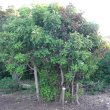
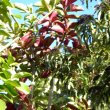
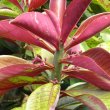
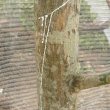
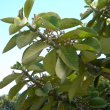
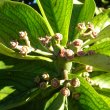
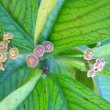
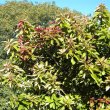
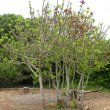
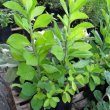


Comments
umdlebe tree
we even named our crop (emdlebeni) because there was that tree there years ago eKhangelani in Eshowe. My granny used to come back from it sick after ploughing there. It's also available at the banks of Tugela river bridge on the Mandeni side. It's fenced around for protection.
umdlebe
Hello Mluleki. Do you have any idea if this tree still exist at khangelani. I need to see it please, Or if you know it anywhere else. the one at Tugela has been chopped off
Umdlebe tree
Hi Mluleki
Thanks for your comment. Very interesting.
Regards
Lorraine
Hi
Hi
Is it true that if you cut uMdlebe Tree it bleeds Blood.
Thankx
uMdlebe tree 'bleeding'
Hi Msizi
This tree, like many euphorbias, 'bleeds' a lot of white, sticky sap if the bark is cut. Perhaps the traditional meaning is that this is the 'blood' of the tree. I made a cut in the bark and have taken a photo of this which you can see above.
Kind regards
Lorraine
Umdlebe
I've been looking for this tree for the past six weeks around mandeni and everywhere that its known to been removed. Can someone tell me where to find one please. I just want to see it
Umdlebe
I looked for the tree until I found it. It is along the N2 freeway driving south. On the offramp Blythedale Beach. While driving towards the beach it is on the left hand side on the hill, fenced with electric fence.
Umdlebe
I looked for the tree until I found it. It is along the N2 freeway driving south. On the offramp Blythedale Beach. While driving towards the beach it is on the left hand side on the hill, fenced with electric fence.
umdlebe tree
Hi I'd like to know more about this tree is it the same tree that is called the ultimatum tree does it really kill people and animals when they become closer to it?
Umdlebe Tree
Is it true that this tree kills people every year.
Umdlebe tree - Traditional beliefs
Hi Clinkzoe and Jabulani
I am answering both your queries here as you have asked the same question.
Firstly, the Ultimatum tree was a Sycamore Fig Tree (Umkhiwane) near Fort Pearson in KZN. Under this tree in 1878, the British gave King Chetshwayo an ultimatum that, among other things, he had to demobilize his army. The King refused and the British attacked the Zulu, leading to the loss of their independence. This tree was burned down in 2004.
Regarding the Umdlebe tree, there are many traditional beliefs connected with it and it is not my place to dismiss them. It is reported that in some rural areas, the belief is that this tree will cry like a Plumed Snake and lures people and animals to come closer so that it can kill them. Even birds flying over it are said to fall dead from the sky.
All I can report is that I have never experienced any evil from this tree, neither have I read of or heard any hard evidence of its having caused the death of anyone. I have two in my garden and no animals, birds or people have come to any harm.
It would be interesting to know how this belief came about. Perhaps someone could give us more information.
Kind regards
Lorraine
Umdlebe Tree
I would like to thank you for your explaination.I destroyed one of my tree in my garden thinking that it was Umdlebe tree but comparing the leaves from your website ,I think I destroyed the wrong tree.
Regards
Jabulani
Oh dear! But it is easy to
Oh dear! But it is easy to see how one can be confused. Some of the fig trees have big leaves very similar to the Umdlebe, and they also have a milky sap.
Another small tree that is also found in many South African gardens, is the Frangipani tree. It looks even more like the Umdlebe and it also has milky sap. You can see what it looks like on the interrnet typing in 'Frangipani tree' and looking at the images. Look especially at the leaves. It is interesting to note that in some countries in Asia, the Frangipani tree is believed to provide shelter to ghosts and demons, and it is associated with funerals, graveyards and death. It is very possible that this is the tree you removed. I'd be interested to know.
Regards
Lorraine
Umdlebe
It true that it cry like a goat ?
Traditional beliefs
Hi Ayanda
I do not think so but I am from a different culture and I do not wish to upset age-old traditions. Perhaps a Sangoma or healer could answer the question. I found the following sites which mention this tree in connection with traditional beliefs:
http://idamulamahlebo.blogspot.com/2013/11/this-time-i-would-like-us-to-...
http://www.sowetanlive.co.za/sowetan/archive/2010/04/14/progress-but-at-...
The following site is in a different language so I am not sure what it is about: http://www.azishe.net/story/54953
Kind regards
Lorraine
What I have heard about
What I have heard about umdlebe tree is that it cries like a goat, it bleeds blood and animals that stand under this tree perish there. I have seen this tree in one of the yards at rosebank,when you go pass it it doesn't cry, but what I've realised is that when the dog rubbed itself from it , it started swelling.
Hi Charity
I'm in need of that tree if its still there in rosebank please direct me or anyone who can help me to find it I know its dangerous to get near it but I have learnt some few tricks to get around
Please anyone your help will be highly appreciated
Discuss this plant
Share knowledge, ask a question or give an experience.